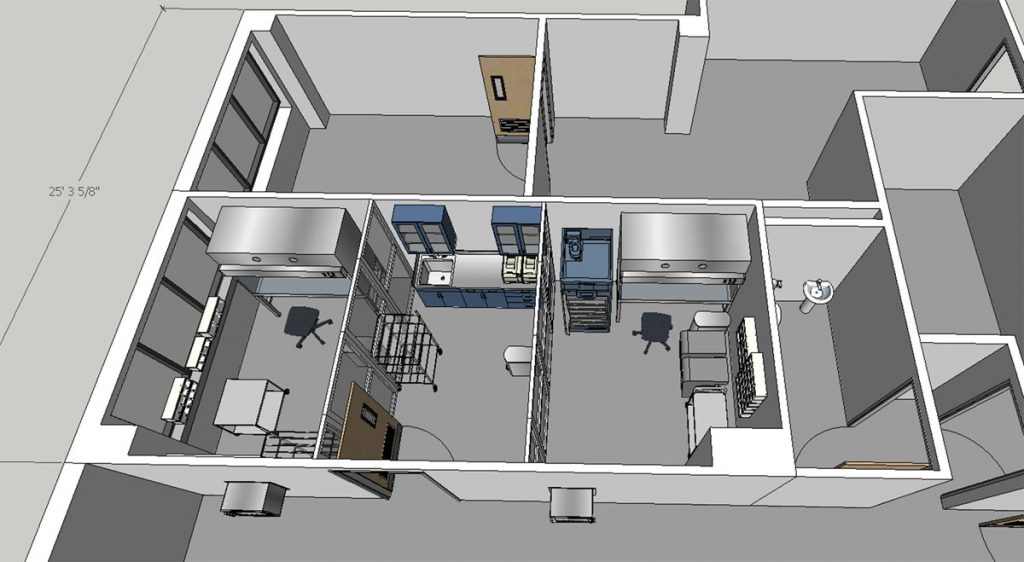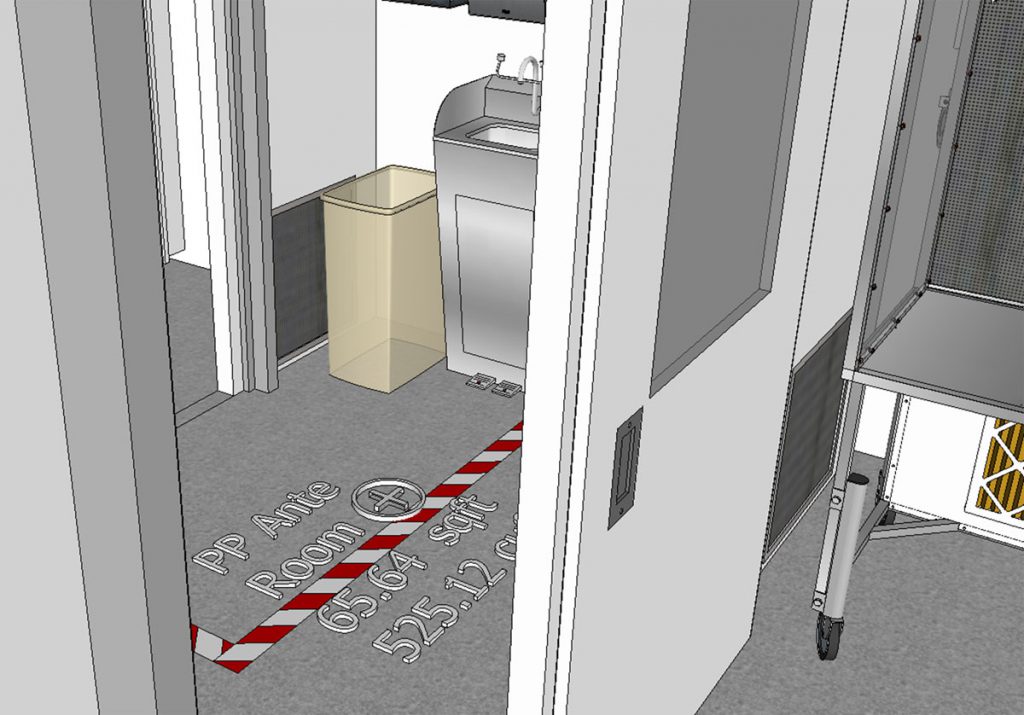Pharmacy Planning and Design

We have done a lot of work in pharmacy planning and design.
We do strongly recommend implementation of isolator-based solutions for facilities that do not implement any type of isolator, but certainly will design to our clients interests.
Whether isolator or cleanroom based if we’re talking about both sterile and hazardous sterile we will approach the job with six general zones.
Cleanroom Pharmacy Planning and Design
The first known general zone, is actually outside of the cleanroom and is the pre-cleaning station. In the hazardous drug area we like to see packages from shipping and receiving brought into a negative pressure zone for staging and preparation.
Because we always try to set all the negative pressure zones together, we can also manipulate pressure differentials in a significantly more aseptic method. This is because we can make the unconditioned dirty receiving area more negative to the subsequent clean areas.


We also implement custom designed pass-throughs that enable appropriate airflow to keep interior contents cleaner and to minimize traffic into the cleaner sides.
Separation in the facility is at the highest level – two sets of rooms grouped according to the type of drugs handled and compounded, Hazardous and Non Hazardous. They are completely segmented by the pharmacy work area in between.
The amount of protection for the people entering the hazardous drug zone can even sometimes be worse due to the concentration and inventory of materials. Opening boxes from shipping and receiving, while it isn’t mandated by USP 800 to be in a negative pressure zone, we strongly recommend that be the case.
Detailed Pharmacy Planning and Design
This is a good example of just how detailed our designs are: you can see the entry area to the positive pressure clean room, the layout of the sink, the data sheet for the sink, location of low wall returns automatic sliding door, and some detail of the laminar flow hood.
When we do a pharmacy planning and design job we are designing down to the nuts and bolts so that when the package is approved and turned over there is no question about what this facility will look like.

When it comes to cleanroom design, fabrication, installation, pricing, and customer service, we do cleanrooms right.
Many modules and custom designs available.
Contact us today!
Pharmacy Planning and Design – FAQs
1. What are the key considerations in pharmacy planning and design?
Key considerations in pharmacy planning and design include optimizing workflow for efficiency, ensuring regulatory compliance with health and safety standards, safeguarding medications with proper storage and security measures, respecting patient privacy during consultations, ensuring accessibility for all patients, and maximizing space utilization.
2. How can a pharmacy layout improve workflow efficiency?
A pharmacy layout can improve workflow efficiency by centralizing dispensing, counseling, and checkout areas; designing clear and efficient pathways for staff and patient movement; integrating automated dispensing systems; separating tasks into designated areas; and organizing medications and supplies for quick access and restocking.
3. What regulations and standards must be followed in pharmacy design?
Pharmacy design must adhere to FDA regulations for medication storage and handling, state board of pharmacy requirements specific to each state, Good Manufacturing Practices (GMP) for compounding pharmacies, and HIPAA regulations to ensure patient privacy and confidentiality.
4. How to ensure optimal storage conditions for medications in a pharmacy?
Optimal storage conditions for medications in a pharmacy are ensured by maintaining temperature-controlled storage areas, organizing medications according to storage requirements, using appropriate shelving and labeling systems, implementing security measures to prevent unauthorized access, and regularly monitoring storage conditions.
5. What are the best practices for designing a compounding pharmacy?
Best practices for designing a compounding pharmacy include implementing separate clean rooms for sterile and non-sterile compounding, ensuring proper ventilation and air filtration systems, using dedicated equipment and supplies for each compounding process, adhering to GMP guidelines, and maintaining strict cleanliness and hygiene protocols.
6. How to integrate technology into pharmacy design for better patient service?
Technology can be integrated into pharmacy design for better patient service by implementing automated dispensing systems, electronic health records (EHR) for efficient patient information management, telepharmacy services for remote consultations, mobile apps for prescription refills and notifications, and digital signage for patient education and communication.
7. What are the common challenges in pharmacy planning and how to overcome them?
Common challenges in pharmacy planning include space constraints, regulatory complexity, technological integration, workflow inefficiencies, and maintaining patient privacy. These challenges can be overcome by conducting thorough needs assessments, collaborating with architects and pharmacy consultants, leveraging technology for automation and efficiency, and ensuring ongoing staff training and compliance with regulatory standards.

